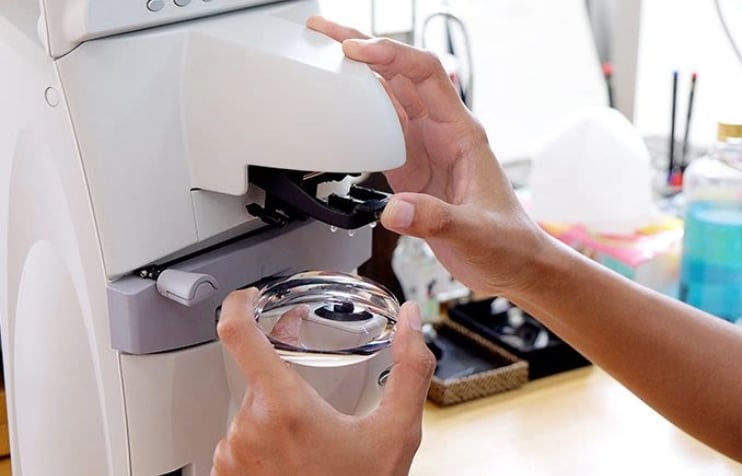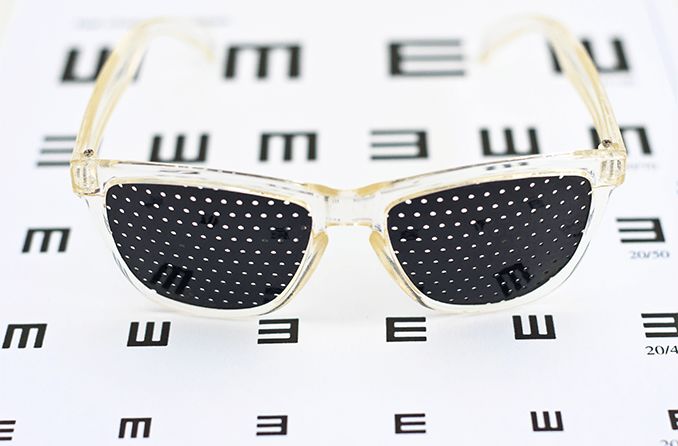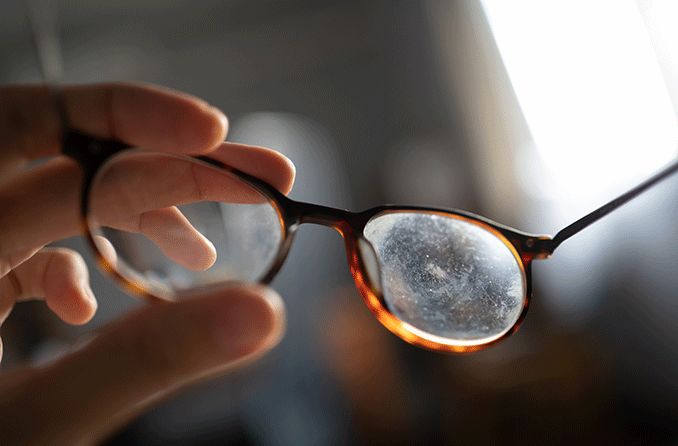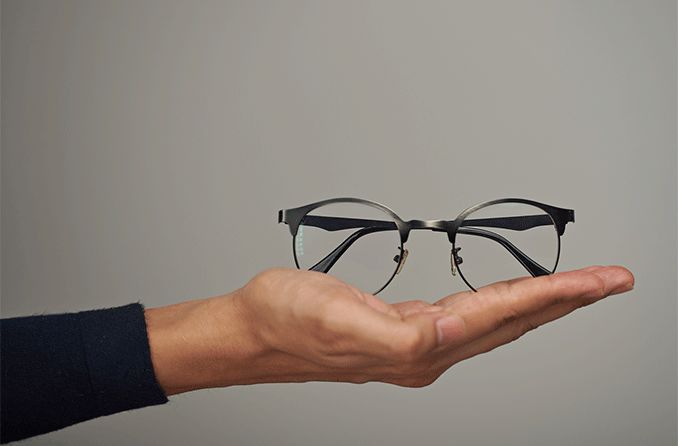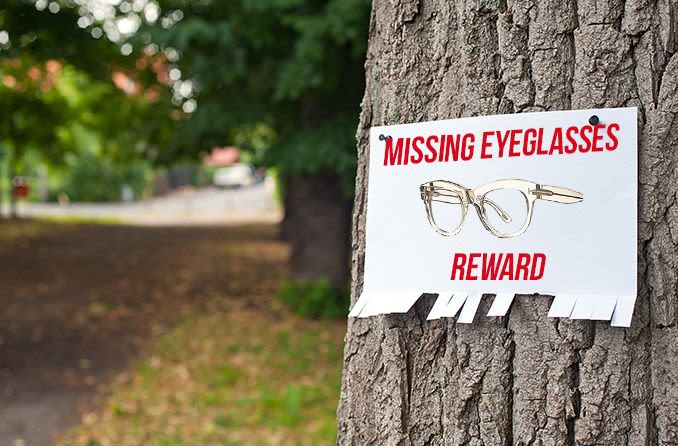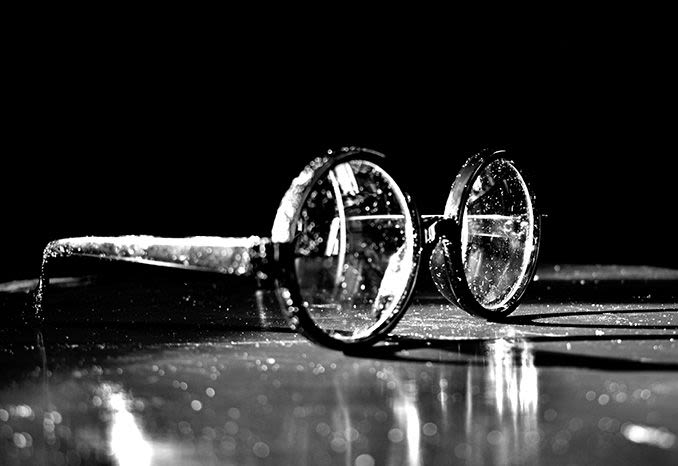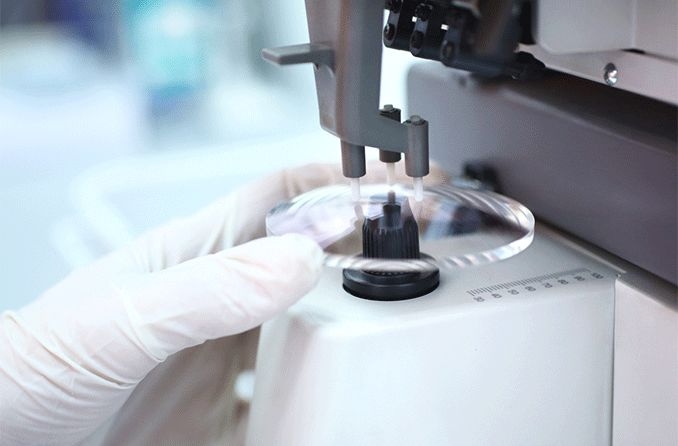How do glasses help you see better?
Glasses help you see more clearly if you have a refractive error that makes your vision blurry. But to understand how glasses work, it’s important to first understand how your eyesight functions. Your eyes and brain work together to allow you to see. In fact, a significant part of your brain activity is dedicated to visual function.
How does vision work?
When you look at an object, light waves reflect off of it and enter your eyes. They first pass through the cornea, which is the outer, transparent part of the eye. The cornea bends or refracts the incoming light rays. Next, the rays pass through the dark center of your eye, known as the pupil.
The iris (the colored part of the eye) can contract or expand to change the size of the pupil and control the level of light entering it. The light rays then pass through the eye’s crystalline lens, which adjusts its shape to focus the light onto the retina. The retina is a specialized tissue at the back of your eye that contains light-detecting nerve cells called photoreceptors. There are two types of photoreceptors: rods and cones.
Rods and cones transform light rays into electrical signals that are sent through the optic nerve to the brain. The brain interprets the signals received through the optic nerve as images. Amazingly, this entire process only takes about a fraction of a second.
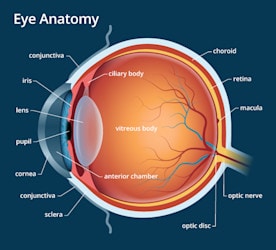
A refractive error occurs when light doesn’t focus properly on the retina. This leads to blurred vision in the form of nearsightedness, farsightedness or astigmatism. Eyeglasses help you see better by bending the light and focusing it directly onto the retina.
What is a refraction?
A refraction measures your refractive error — your degree of myopia, hyperopia or astigmatism. Eye doctors use a phoropter to determine a patient's refractive error and prescribe glasses to correct it. A phoropter is an instrument that has lenses with different powers. The lenses can be changed until the person taking the visual acuity test through the phoropter achieves clear vision.
When your eye doctor asks you, “Which is better, one or two?” during an exam, they assess what power lens your glasses require to correct your refractive error. (The lens power is measured in diopters.)
This procedure is called a refraction and it is an important part of a comprehensive eye exam. In some offices, the eye doctor uses an autorefractor as a starting point for a manual refraction.
Your eye doctor will adjust the lens power based on your responses until they have a final eyeglass prescription. When they have determined the correct lens power for each eye, they will record the diopter values on your prescription. An optical lab will then use the prescription to make the lenses for your glasses.
LEARN MORE: Snellen eye chart: What it is and how it works
How do lenses correct vision?
If you have a refractive error such as nearsightedness, farsightedness or astigmatism, you'll need lenses to correct your vision and help you see better. A lens is made of a clear, curved material, such as plastic or glass. Placed in front of your eyes, the lenses bend incoming light so the rays focus directly on the retina.
The lenses in your prescription glasses work by diverging or converging the incoming light rays, depending on whether you have myopia or hyperopia. The curvature of a corrective lens depends on the type and severity of the refractive error.
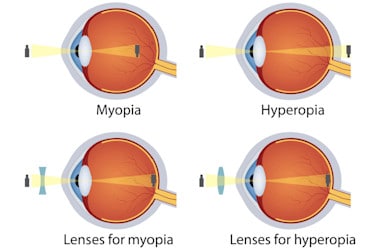
Myopia (nearsightedness)
Myopia causes blurry distance vision while near vision is clear. It can have several causes, including an excessively curved cornea. The most common cause is an eyeball that is too long relative to its refractive power. This is known as axial myopia.
When a person with myopia looks far away, the light rays entering the eyes come to a focus before they reach the retina because the eye is longer than it should be. This causes the light to scatter again and form a blurry image on the retina.
People with myopia require lenses with negative diopter power to shift the focus of incoming light rays farther back so they land on the retina.
Minus lenses have a concave shape that can diverge light (spread the light rays apart). By diverging light, the lenses move the focus further back, landing it on the retina so vision is sharp. Concave lenses diverge light because they are thinner at the center and thicker at the edge.
The more severe the myopia, the greater the divergence of light rays required and the higher the lens power needed.
Hyperopia (farsightedness)
When someone has hyperopia, light rays come to a focus at a point behind the retina, causing near vision (and sometimes distance vision) to be blurry. This can be due to:
- An eyeball that is too short
- The cornea and lens contributing too little focusing power
People with hyperopia require lenses with positive diopter power to shift the focus of incoming light rays closer in so they land on the retina.
Lenses that move the focus of light closer are called convex lenses or plus lenses. They are thicker at the center and thinner at the edge. This convex shape causes the lenses to converge light (bring the light rays to a point). By converging light, the lenses move the focus of the light closer up, landing it on the retina so that vision is crisp and clear.
The more severe the hyperopia, the greater the convergence of light rays required and the higher the lens power needed.
Astigmatism
Astigmatism is usually caused by an uneven curvature of the front part of the eye, called the cornea. Correcting astigmatism is more complicated than correcting nearsightedness or farsightedness.
This is because different powers are needed in different directions, or axes, of the eye. This difference in diopter power is referred to as the cylinder on the prescription. For instance, a person with astigmatism could have a prescription of -3.00 D in one direction and -4.00 D in the other (more curved) direction. The axis is measured in degrees and indicates the direction of the meridian with the most curvature.
Presbyopia
When you’re younger, your eye’s natural crystalline lens (a biconvex lens) can flex and provide instant extra plus power when needed, allowing you to see clearly at all distances. As you reach your mid-40s, the lens becomes less flexible and less able to provide that extra focusing power. Reading things at a close distance becomes increasingly challenging. This loss of near focusing ability is called presbyopia.
Once the natural crystalline lens can no longer provide much near focus, more plus power is needed when reading a book or looking at a phone than when gazing into the distance. Fortunately, glasses with a convex lens (plus diopter power) can be placed in front of the eye to help focus close-up images. These can be:
- Multifocal glasses (bifocals or progressives)
- Multifocal contact lenses
- Reading glasses
The add is the term for the additional plus diopters. As more plus power is needed, the strength of the add increases. Most people have an add between +0.50 D and +3.00 D. As people get older, they need a higher add because of the increased loss of flexibility in the crystalline lens.
People who don't need distance correction or who wear contact lenses to correct their distance vision may use non-prescription reading glasses (readers) with plus power. Consult your eye doctor about the most appropriate option for you.
How do progressive lenses work?
Progressive addition lenses, also known as PAL or multifocal lenses, provide a transition between three different vision zones — close-up, intermediate and distance — in a single lens without visible lines.
Since the lenses don't have a line indicating the transition between prescription powers, it might take some time to adjust to seeing through them. You must remember to look through:
- The top portion of the lens to see at a distance
- The middle and bottom of the lens to see closer up
Because of how progressive lenses are designed, peripheral distortion can occur while moving your eyes from one side to the other. While adjusting to progressives, you might experience a sense of imbalance or even nausea if you look through the incorrect part of the lens.
However, most people adapt within a few weeks. The key is to wear your new glasses as often as possible and learn to look through the correct part of the lens for different viewing distances.
How do sunglasses work?
Sunglasses are designed to protect against ultraviolet (UV) radiation by reflecting or blocking the harmful rays. Sunglasses also reduce glare.
Sunglasses are important to wear outdoors because excessive UVA and UVB light exposure can harm the eyes, eyelids and skin around the eyes. Chronic UV exposure can increase the risk of developing:
- Macular degeneration
- Corneal damage
- Cataracts
- Eyelid cancers
Lens tint
When choosing a lens tint for your sunglasses, amber or brown lenses can enhance contrast, which may help you see better. For driving, brown, gray, green or yellow lenses are often recommended as they help decrease color distortion.
Photochromic lenses
Photochromic lenses automatically darken when you go outdoors and return to clear indoors. They protect against UV rays and reduce glare. These lenses are especially convenient if you wear prescription eyeglasses, so you don’t have to switch between indoor glasses and outdoor sunglasses.
Polarized lenses
Polarized sunglasses don’t offer UV protection but are excellent for reducing glare when driving and for outdoor sports like boating or fishing. They are also very helpful in preventing glare if you’ve had refractive eye surgery, such as LASIK. Always ensure that your polarized glasses come with protection from UV radiation.
How do AR or smart glasses work?
Augmented reality smart glasses (AR glasses) work by projecting computer-generated images directly onto the retina, the light-sensitive tissue at the back of the eyes. This allows the eyes to receive information passively, and no physical screen is needed.
AR glasses utilize a see-through display that lets your eyes perceive two light sources simultaneously. One light source is from the real world, and the other is projected by a Near-Eye Display (NED) about 2 centimeters in front of the eyes.
When the screen becomes opaque, light from the outside world won't pass through. Your eyes will only perceive the light emitted by the NED, immersing you in virtual, or augmented, reality.
Glasses with smart eyewear capabilities have many advanced features built into the frames, including wireless connectivity. With these features, you can use your smart glasses to:
- Answer phone calls
- Listen to music
- Respond to messages
- Utilize a voice assistant
How do diffraction glasses work?
Diffraction glasses can be worn at concerts or during fireworks to enhance a show's visual effects. The "lenses" in these glasses do not correct refractive errors. They are made of a grating that spreads light to create a rainbow effect.
How do I know if I need glasses?
If you have difficulty seeing clearly at distance or up close, you may need glasses or a new eyeglasses prescription. More subtle signs that you need glasses can include eye strain or headaches. An eye doctor can determine if you need glasses and provide a prescription to help you see clearly at all distances.
Schedule a comprehensive eye exam so your eye doctor can check your vision and eye health. Keeping up routine eye exams can help you maintain clear vision throughout your life.
